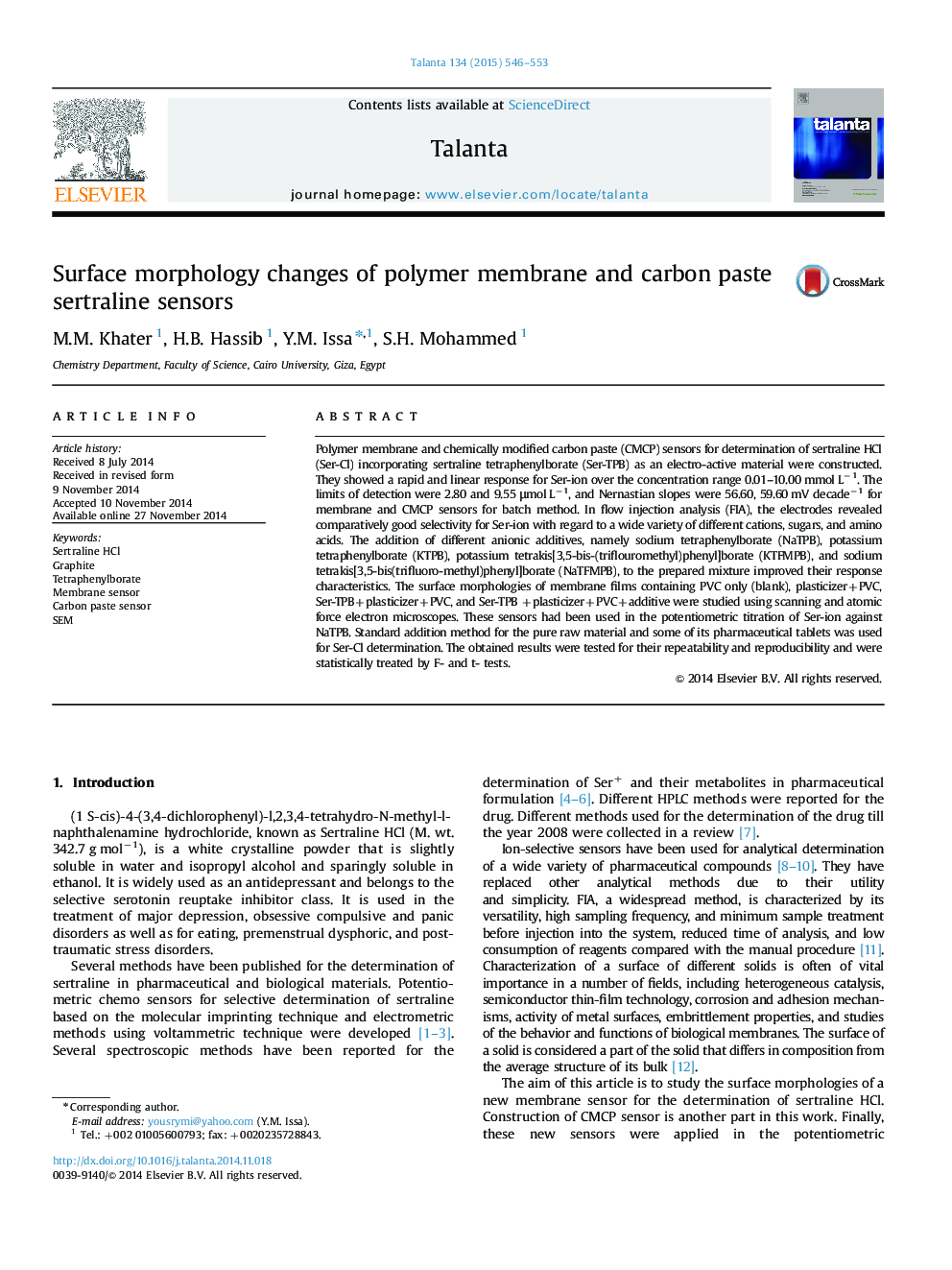| Article ID | Journal | Published Year | Pages | File Type |
|---|---|---|---|---|
| 1244117 | Talanta | 2015 | 8 Pages |
•New sensors for sertraline HCl incorporating Ser-TPB were constructed.•Sensors display linear response over a wide concentration range.•The sensors were applied in flow injection analysis.•The surface morphologies of the membrane films were studied.•The obtained results were validated and statistically treated.
Polymer membrane and chemically modified carbon paste (CMCP) sensors for determination of sertraline HCl (Ser-Cl) incorporating sertraline tetraphenylborate (Ser-TPB) as an electro-active material were constructed. They showed a rapid and linear response for Ser-ion over the concentration range 0.01–10.00 mmol L−1. The limits of detection were 2.80 and 9.55 μmol L−1, and Nernastian slopes were 56.60, 59.60 mV decade−1 for membrane and CMCP sensors for batch method. In flow injection analysis (FIA), the electrodes revealed comparatively good selectivity for Ser-ion with regard to a wide variety of different cations, sugars, and amino acids. The addition of different anionic additives, namely sodium tetraphenylborate (NaTPB), potassium tetraphenylborate (KTPB), potassium tetrakis[3,5-bis-(triflouromethyl)phenyl]borate (KTFMPB), and sodium tetrakis[3,5-bis(trifluoro-methyl)phenyl]borate (NaTFMPB), to the prepared mixture improved their response characteristics. The surface morphologies of membrane films containing PVC only (blank), plasticizer+PVC, Ser-TPB+plasticizer+PVC, and Ser-TPB +plasticizer+PVC+additive were studied using scanning and atomic force electron microscopes. These sensors had been used in the potentiometric titration of Ser-ion against NaTPB. Standard addition method for the pure raw material and some of its pharmaceutical tablets was used for Ser-Cl determination. The obtained results were tested for their repeatability and reproducibility and were statistically treated by F- and t- tests.
Graphical abstractThe effect of adding the electro active material to the prepared membranes on improving their response characteristics was studied. As the response of electrochemical sensor is related to the physical morphology of its surface, scanning electron microscope (SEM), two and three dimension atomic force microscopes (AFM) were used to study their surface morphologies.Figure optionsDownload full-size imageDownload as PowerPoint slide
